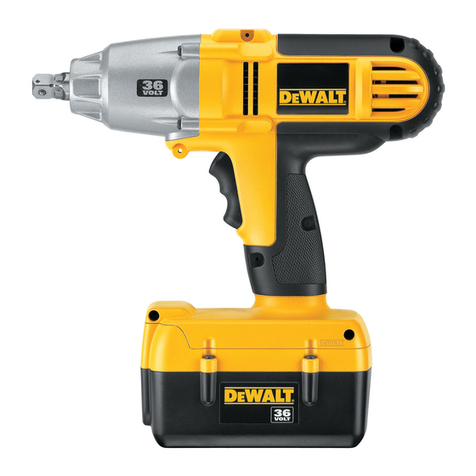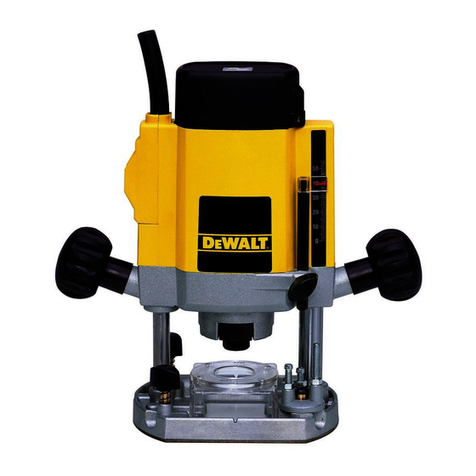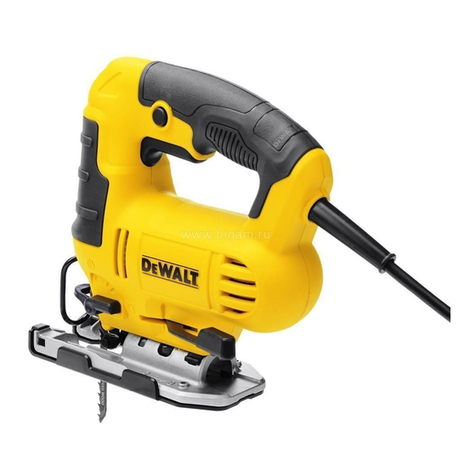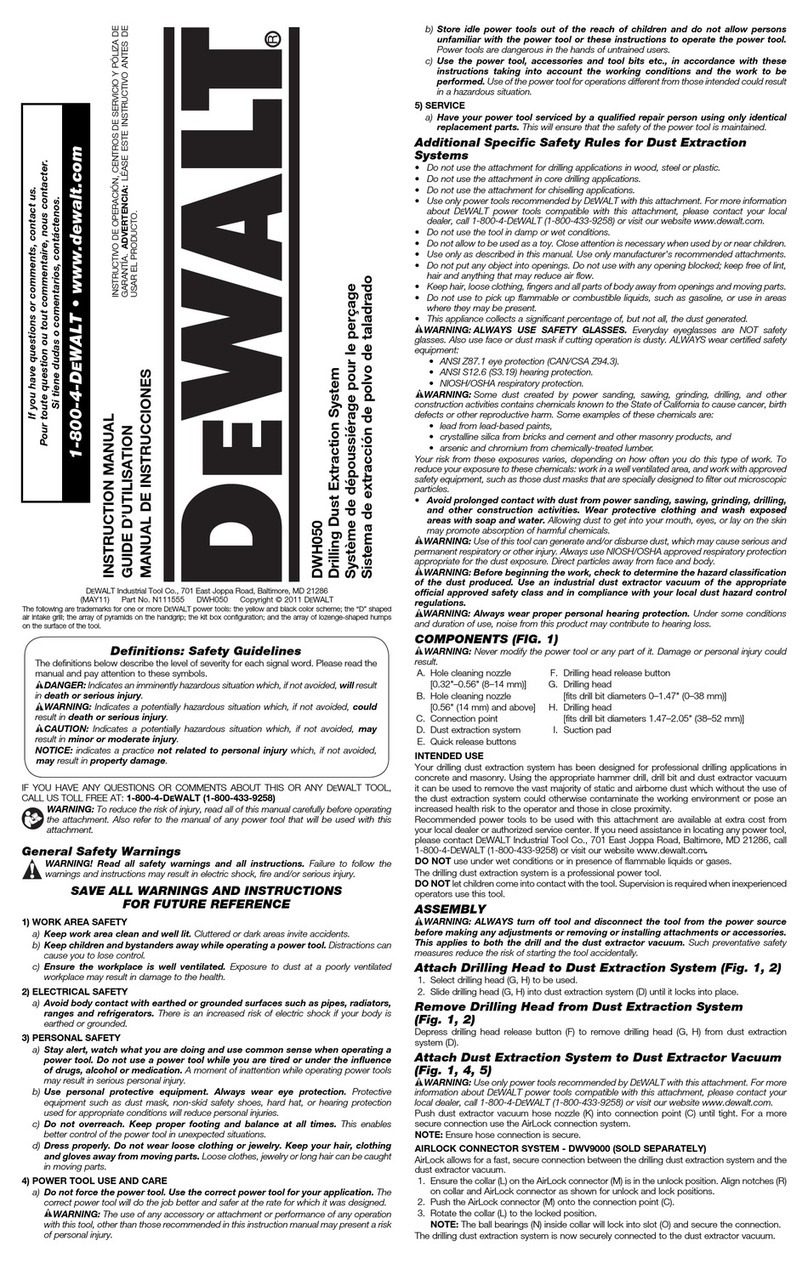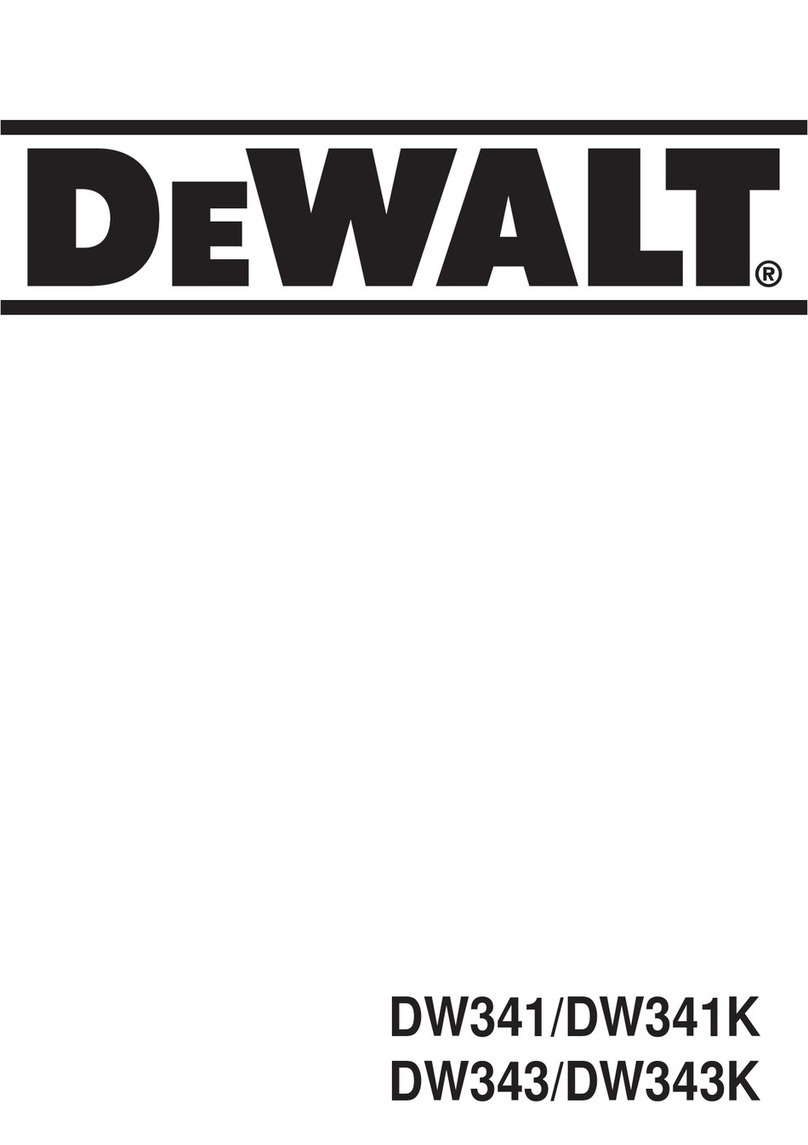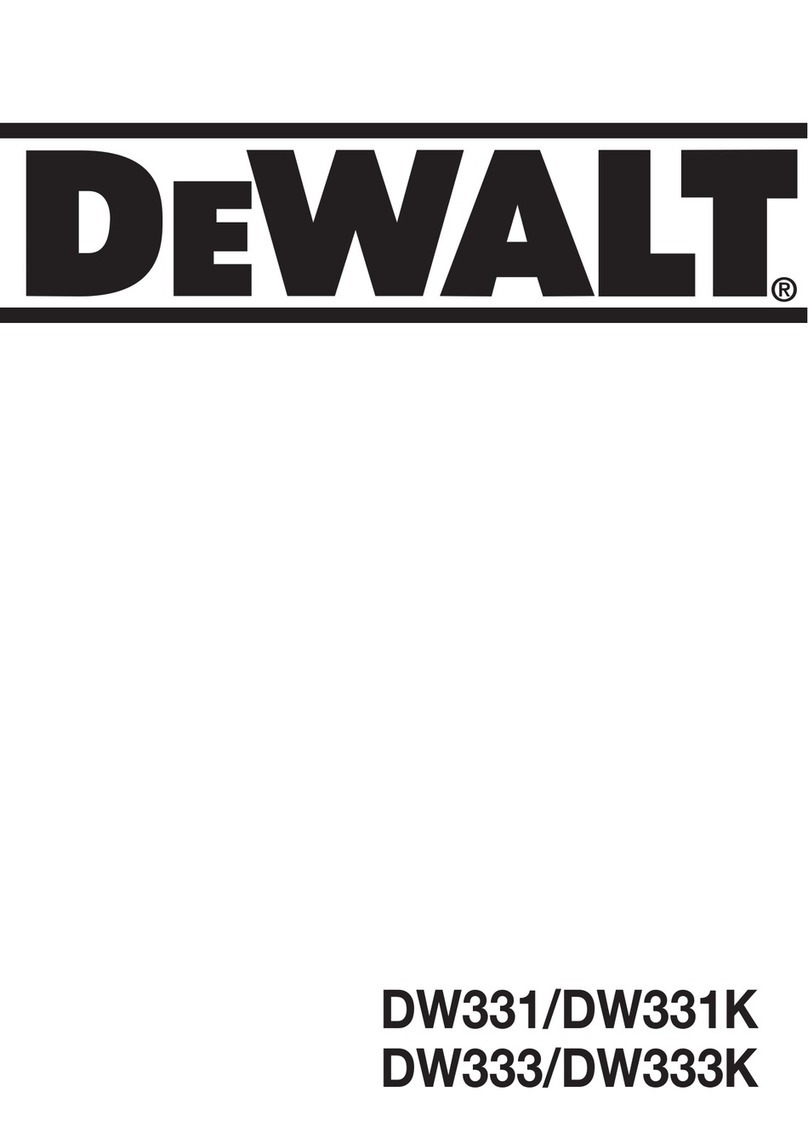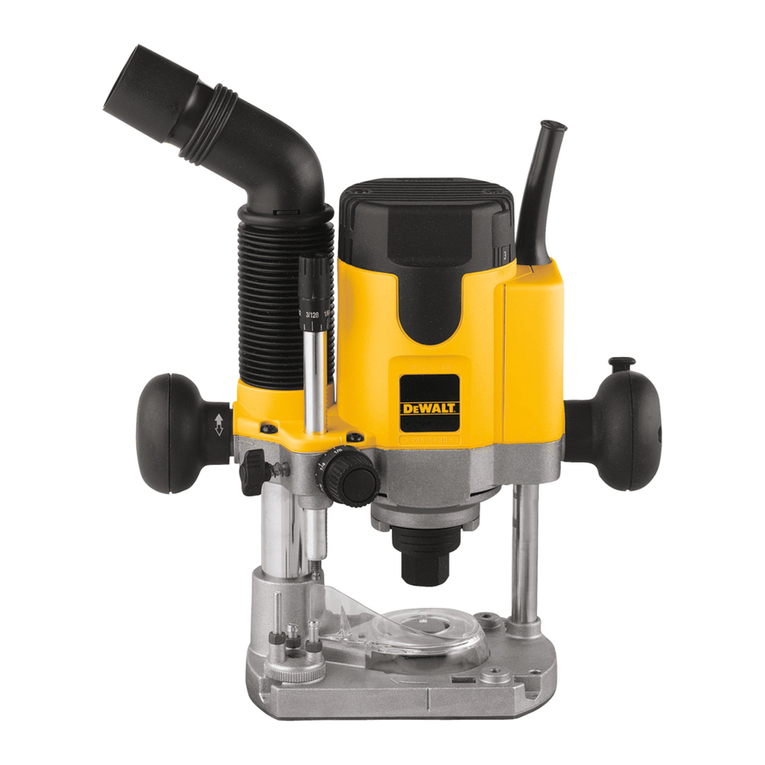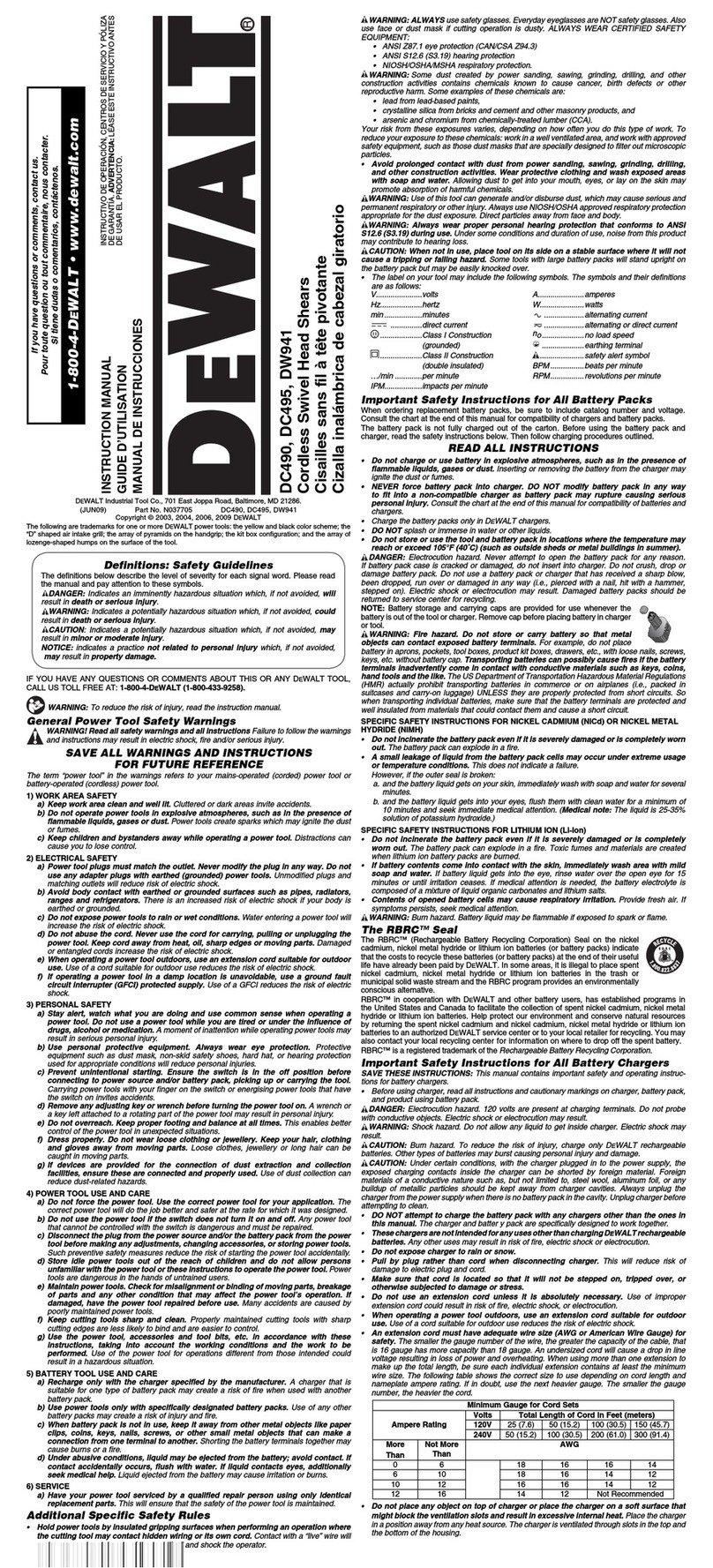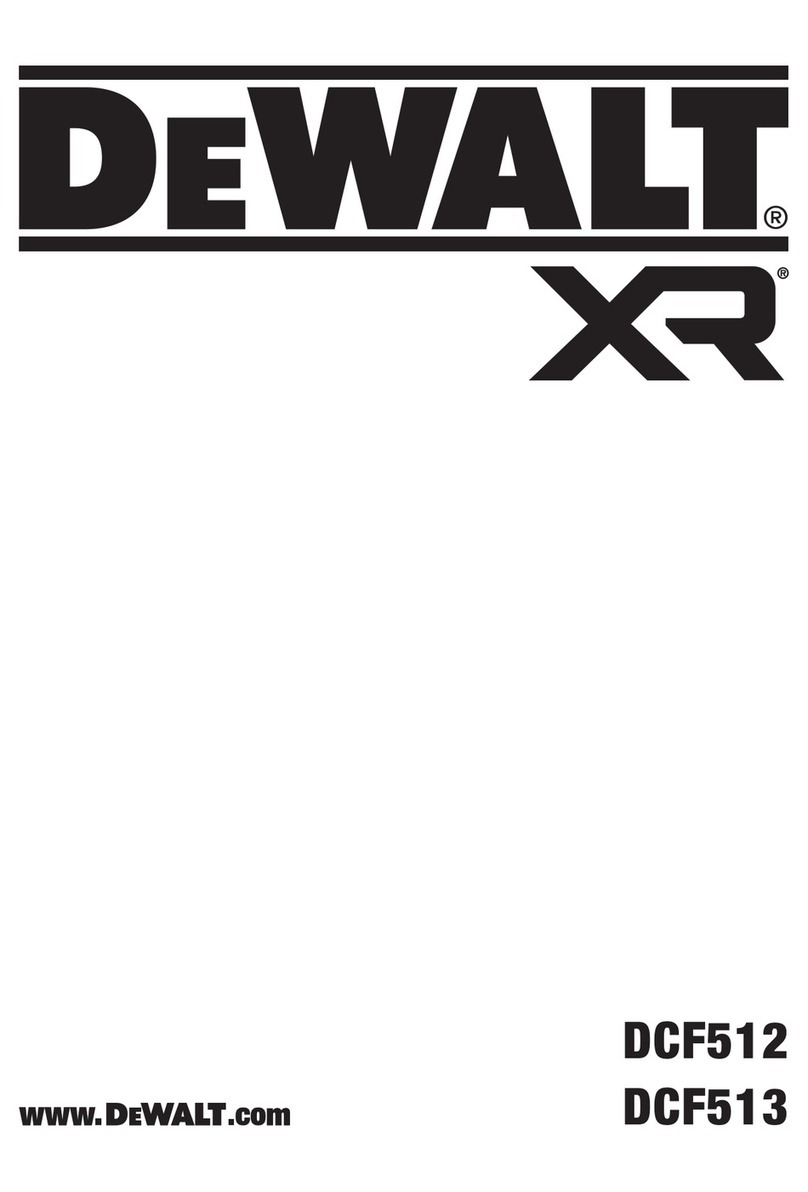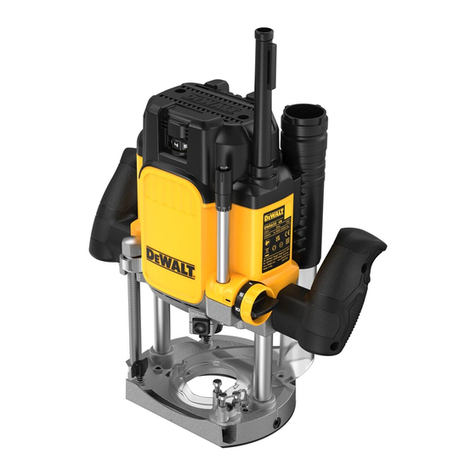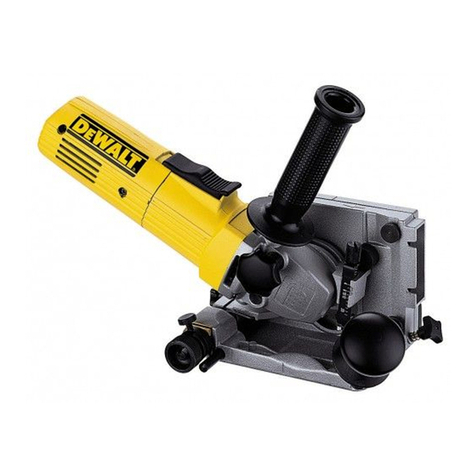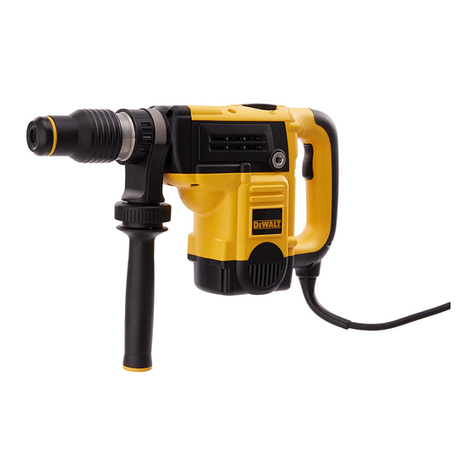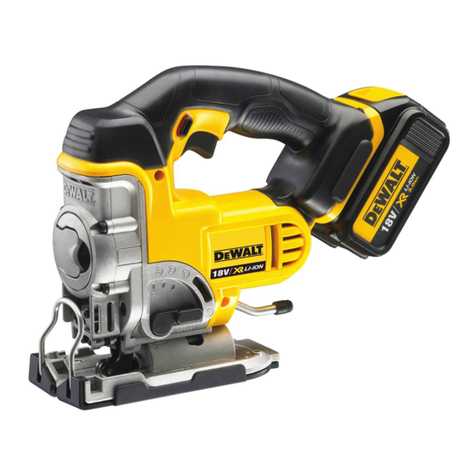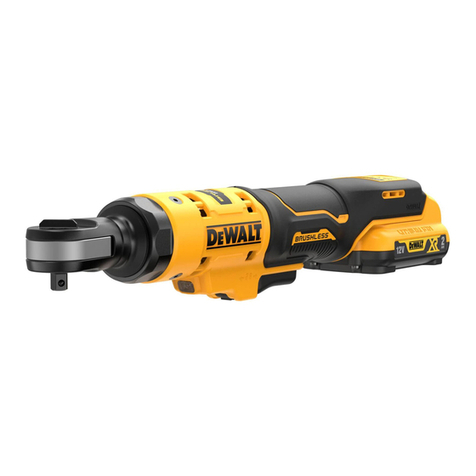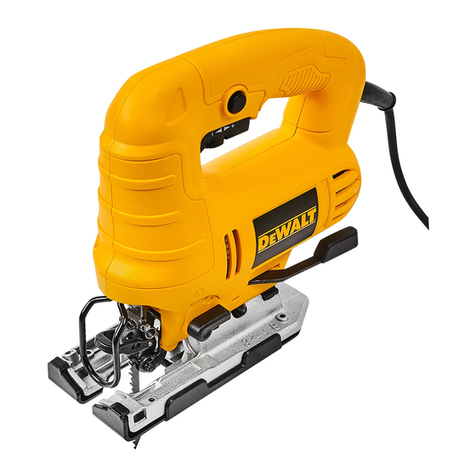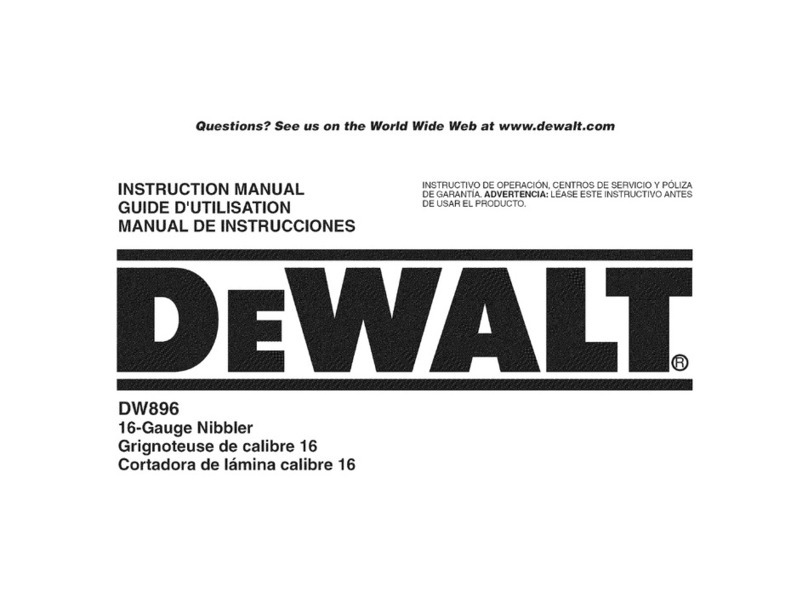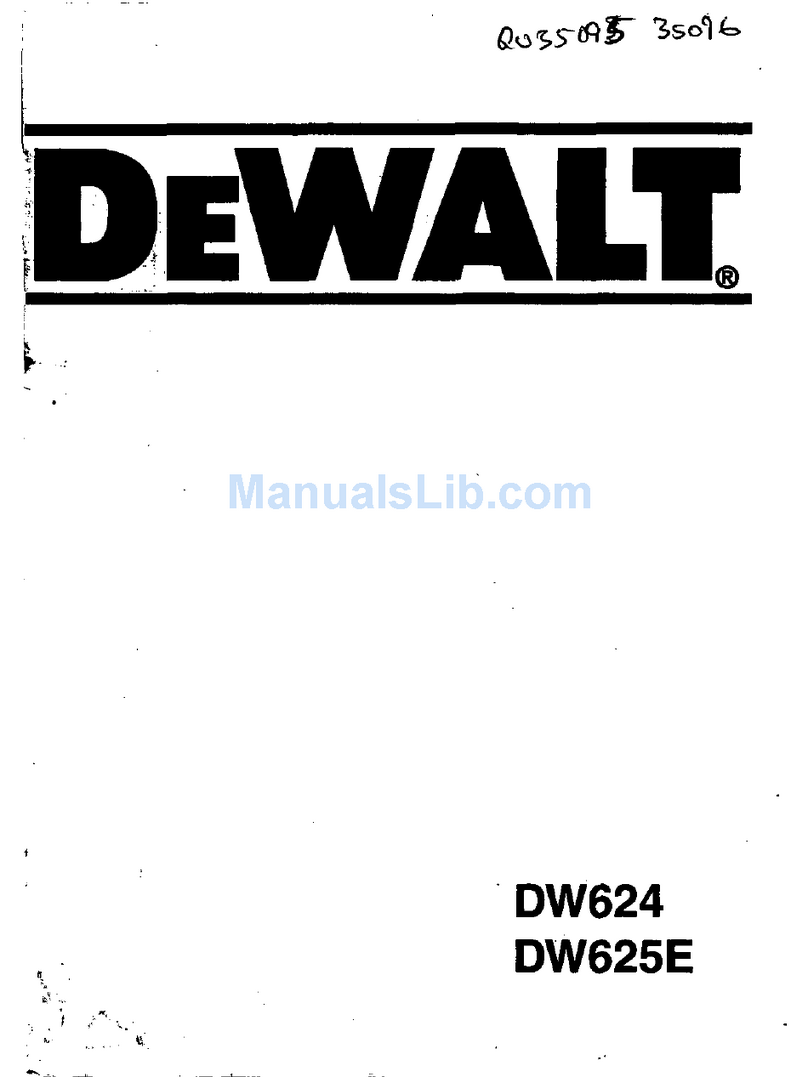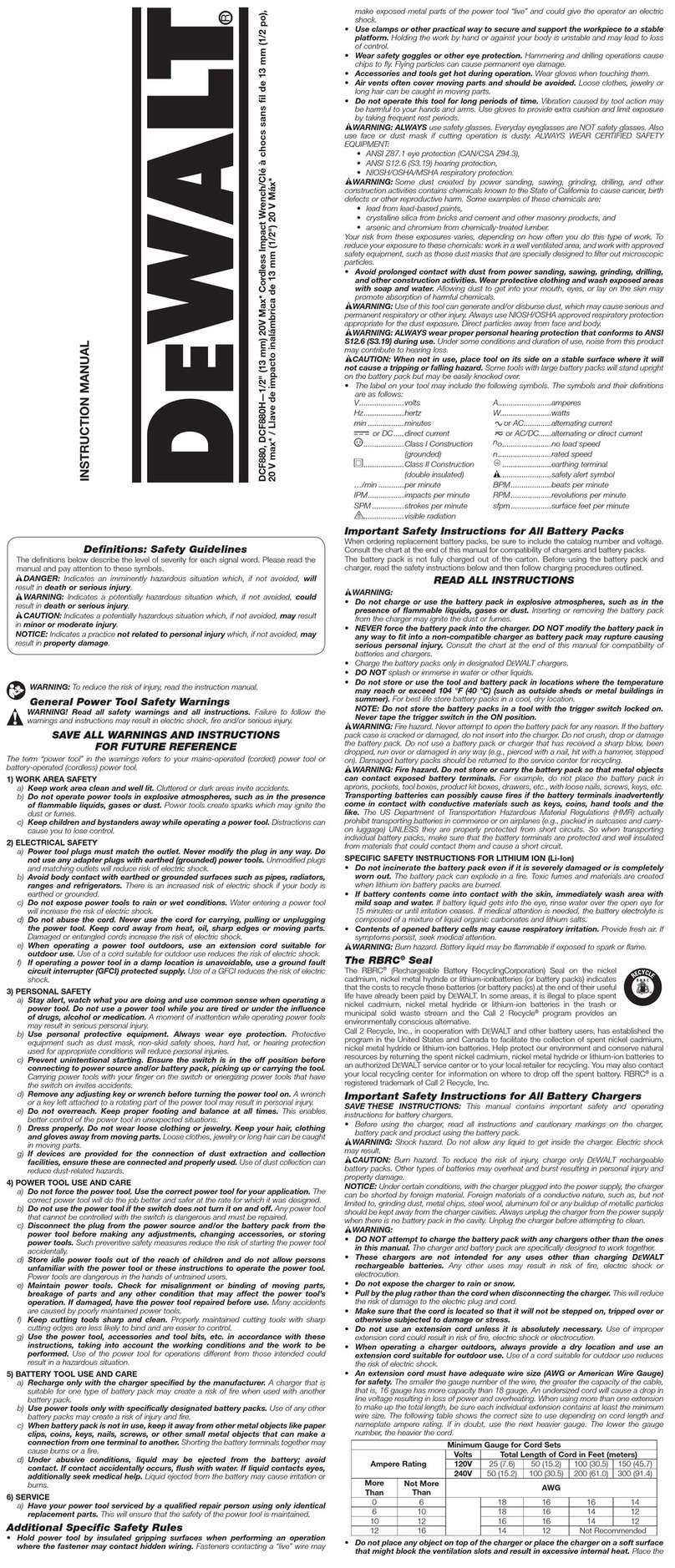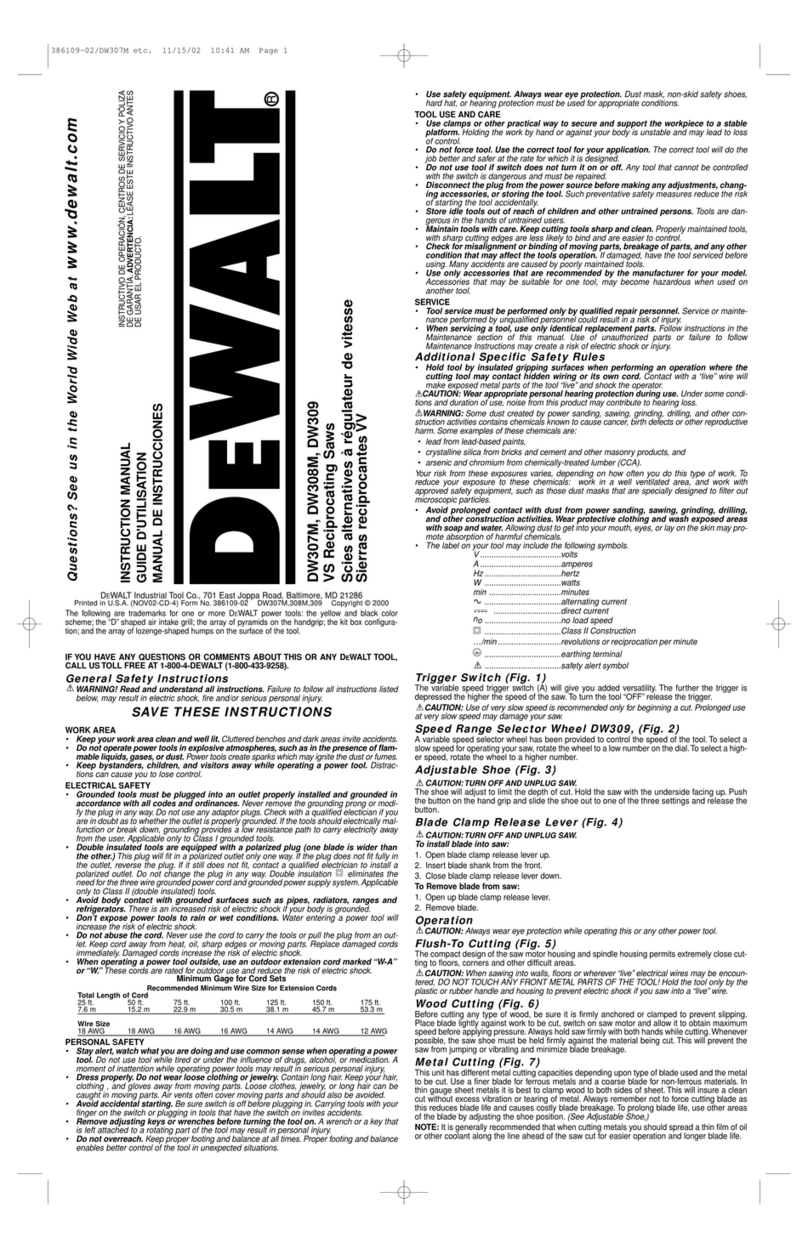ENGLISH
9
WARNING: To reduce the risk of injury, turn unit off and disconnect machine
from power source before installing and removing accessories, before adjusting
or changing set-ups or when making repairs. Be sure the trigger switch is in the OFF
position. An accidental
start-up can causeinjury.
The attention of UK users is drawn to the “woodworking machines regulations 1974” and any
subsequentamendments.
Ensure the machine is placed to satisfy your ergonomic conditions in terms of table height
and stability. The machine site shall be chosen so that the operator has a good overview and
enough free surrounding space around the machine that allows handling of the workpiece
without anyrestrictions.
To reduce effects of increased vibration, make sure the environment is not too cold, the
machine and accessory are well maintained and the workpiece size is suitable for thismachine.
Switching On and Off (Fig. A)
A hole30 is provided in the on/off switch1 for insertion of a padlock to lock thetool.
1. To run the tool, press the on/off switch1 .
2. To stop the tool, release theswitch.
Use of XPS™ LED Worklight System (Fig. A, V)
NOTE: The mitre saw must be connected to a powersource.
The XPS™ LED Worklight System is operated with an push button switch, fitted on the handle
under the black plastic lever. The XPS™ LED Worklight System is independent of the mitre
saw’s triggerswitch.
To cut through an existing pencil line on a piece ofwood:
1. Push the black plastic lever, then pull down on the operating handle3 to bring the saw
blade8 close to the wood. The shadow of the blade will appear on thewood.
2. Align the pencil line with the edge of the blade’s shadow. You may have to adjust the
mitre or bevel angles in order to match the pencil lineexactly.
Speed Control Dial (DWS771 only)
The speed control dial29 can be used for advance setting of the required range ofspeed.
Turn the speed control dial29 to the desired range, which is indicated by a number (1–5).
• Use high speeds for sawing soft materials such aswood.
• Use low speeds for sawinghardwood.
Body and Hand Position
Proper positioning of your body and hands when operating the mitre saw will make cutting
easier, more accurate andsafer.
WARNING:
• Never place your hands near the cuttingarea.
• Place your hands no closer than 150mm from theblade.
• Hold the workpiece tightly to the table and the fence when cutting. Keep your hands
in position until the switch has been released and the blade has completelystopped.
• Always make dry runs (without power) before finish
cuts so that you can check the path of theblade.
• Do not cross yourhands.
• Keep both feet firmly on the floor and maintain properbalance.
• As you move the saw arm left and right, follow it and stand slightly to the side of the
sawblade.
Basic Saw Cuts
Vertical straight cross cut (Fig. A, S)
NOTE: Use 216mm saw blades with 30mm arbor holes to obtain the desired
cuttingcapacities.
1. Slacken the mitre latch13 and subsequently lift itup.
2. Engage the mitre latch13 at the 0° position and fasten the mitrelatch.
3. Place the wood to be cut against the fence16 .
4. Take hold of the carrying handle3 and press the guard lock up release lever2 to release
the guard. Press the trigger switch1 to start the motor. It is recommended to start the cut
near thefence.
5. Depress the head to allow the blade to cut through the timber and enter the plastic
kerfplate11 .
6. When the head is fully depressed, slowly pull it across to complete thecut.
7. After completing the cut, release the switch and wait for the saw blade to come to a
complete standstill before returning the head to its upper restposition.
WARNING:
• For some types of plastic profiles, it is advisable to follow the sequence in reverseorder.
• The lower blade guard is designed to close quickly
when the lever2 is released. If it does not close within
1 second, have the saw serviced by an authorized DeWALT repairagent.
Vertical mitre cross-cut (Fig. A, T)
1. Squeeze the mitre latch13 . Move the arm left or right to the requiredangle.
2. The mitre latch will automatically locate at 0°, 15°, 22.5°, 31.62°, 45° and 50° both left and
right. If any intermediate angle is required hold the head firmly and lock by fastening the
mitrelatch.
3. Always ensure that the mitre lock lever is locked tightly beforecutting.
4. Proceed as for a vertical straight cross-cut.
2. Press the saw head fully to the rear position and measure the height from the rotating
table14 to the bottom of the outer flange5 (Fig.J).
3. Turn the saw head traverse lock18 (Fig.B).
4. Keeping the saw head fully depressed, pull the head to the end of itstravel.
5. Measure the height indicated in figureK again. Both values should beidentical.
6. If adjustment is required, proceed as follows (Fig.L):
a. Loosen the locknut46 in the bracket47 under the upper dust extraction nozzle37
and adjust the screw48 as required, proceeding in smallsteps.
b. Tighten the locknut46 .
WARNING: Always check that the blade does not touch the table at the rear of the slot or
at the front of the rotating arm at 90° vertical and 45° bevel positions. Do not switch on
before having checked this!
Adjusting the Fence (Fig. M)
Turn the sliding fence lock knob9 anti-clockwise to loosen. Move the sliding fence16 to a
position that avoids the blade cuts it,then tighten the fence lock knob by turningclockwise.
Checking and Adjusting the Blade to the Fence (Fig. B, N, O, Q)
1. Slacken the mitre latch13 .
2. Place your thumb on the mitre arm12 and squeeze the mitre latch13 to release the
rotating table/mitre arm14 .
3. Swing the mitre arm until the latch locates it at the 0° mitreposition.
4. Pull down the head and lock it in this position using the lock down button23 .
5. Check that the two 0° markings49 on the mitre scale15 are justvisible.
6. Place a square50 against the left side of the fence16 and blade8 .
WARNING: Do not touch the tips of the blade teeth with thesquare.
7. If adjustment is required, proceed asfollows:
a. Loosen the screws51 and move the scale/mitre arm assembly left or right until the
blade is at 90° to the fence as measured with the square (Fig.N).
b. Retighten the screws51 .
Checking and Adjusting the Blade to the Table (Fig. P–R)
1. Loosen the bevel clamp handle20 (Fig.P).
2. Press the saw head to the right to ensure it is fully vertical and tighten the bevel
clamphandle.
3. Place a set square50 on the table and up against the blade8 (Fig.Q).
WARNING: Do not touch the tips of the blade teeth with thesquare.
4. If adjustment is required, proceed asfollows:
a. Loosen the bevel clamp handle20 and turn the vertical position adjustment stop
screw52 in or out until the blade is at 90° to the table as measured with thesquare.
b. If the bevel pointer53 does not indicate zero on the bevel scale21 , loosen the
screws54 that secure the scale and move the scale asnecessary.
Checking and Adjusting the Bevel Angle
(Fig. A, P, R)
The bevel override allows the max. bevel angle to be set at 45° or 48° asrequired.
• Left = 45°
• Right = 48°
1. Make sure the override knob55 is located in the leftposition.
2. Loosen the bevel clamp handle20 and move the saw head to theleft.
3. This is the 45° bevelposition.
4. If adjustment is required, turn the stopscrew56 in or out as necessary until the
pointer53 indicates 45°.
WARNING: The guide grooves can become clogged with sawdust. Use a stick or some
low pressure air to clear the guidegrooves.
Prior to Operation
WARNING:
• Install the appropriate saw blade. Do not use excessively worn blades. The maximum
rotation speed of the tool must not exceed that of thesawblade.
• Do not attempt to cut excessively smallpieces.
• Allow the blade to cut freely. Do notforce.
• Allow the motor to reach full speed beforecutting.
• Make sure all locking knobs and clamp handles aretight.
• Secure theworkpiece.
• Although this saw will cut wood and many nonferrous materials,these operating
instructions refer to the cutting of wood only. The sameguide-lines apply to the other
materials. Do not cut ferrous (iron and steel) materials or masonry with this saw! Do
not use any abrasive discs!
• Make sure to use the kerf plate. Do not operate the machine if the kerf slot is wider
than 10mm.
• Placing the workpiece on a piece of wood will increase the capacities to 300mm.
OPERATION
Instructions for Use
WARNING: Always observe the safety instructions and applicableregulations.
